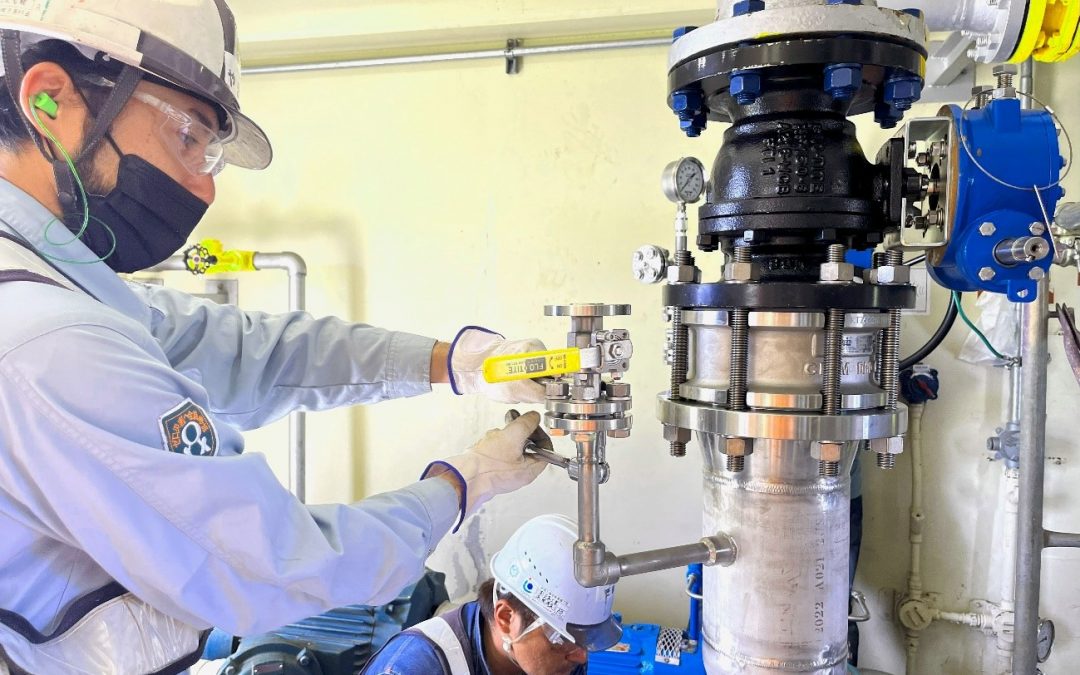Introduction
In the intricate network of industrial facilities, maintaining optimal functionality is paramount. Among the many components ensuring smooth operations, check valves play a crucial role. Today, we delve into the necessity of replacing the spool piece and silent check valve on the discharge side of FP1 and FP2 in Facility 659 Pumphouse. Let’s navigate through the intricacies of this essential upgrade, aimed at enhancing the reliability and safety of the fuel system.
Understanding the Issue
Overview of The Problem
The need for this replacement arises from the discovery of a persistent issue within Facility 659 Pumphouse. Specifically, the existing check valve on the outlet of pumps 1 & 2 has been found to exhibit leakage while in standby mode. Interestingly, during fueling operations or recirculation, the valve functions without any leaks. This discrepancy raised concerns among facility personnel, prompting a closer inspection.
Importance of Check Valves in Fuel System
Before delving into the specifics, it’s crucial to understand the pivotal role check valves play in fuel systems. These valves serve as barriers, allowing the flow of fuel in one direction while preventing backward flow. In essence, they safeguard the integrity of the system, preventing potential hazards such as backflow and pressure surges.
Steps to Replace The Check Valve
Assesing the Existing Check Valve
The first step in this process involves a thorough assessment of the current check valve. Identifying the root cause of the leakage is imperative to devise an effective solution. Factors such as wear and tear, compatibility issues, or inadequate sealing mechanisms must be carefully examined.
Selection of Appropriate Replacement
Once the assessment is complete, the next step is to select a suitable replacement. Given the nature of the application – handling fuel – the replacement must meet stringent criteria. Factors such as material compatibility, pressure ratings, and reliability under varying conditions must be taken into account.
Facility-specific Requirements
Different facilities may have unique requirements for cavity relief and DTR assemblies based on their operational needs and environmental conditions.
Drain Plug Replacement
Drain plugs are prone to wear and tear over time. Replacing them as part of routine maintenance helps prevent leaks and ensures uninterrupted operations.
Installation Process
With the replacement valve identified, the installation process can commence. This involves precise maneuvers to remove the existing check valve and install the new one. Attention to detail is paramount to ensure proper alignment, sealing, and functionality.
Testing and Validation
Pressure Testing After Replacement
Following installation, rigorous testing procedures are imperative to validate the effectiveness of the replacement. Pressure testing, in particular, allows for the detection of any leaks or inconsistencies. This step is crucial in affirming the integrity of the fuel system post-replacement.
Ensuring Leak-Free Operations
Beyond pressure testing, ongoing monitoring is essential to ensure leak-free operations. Regular inspections and maintenance routines help detect any potential issues early on, preventing costly downtime and mitigating risks.
Benefits of Upgrading
Enchanced Reliability and Safety
By replacing the spool piece and check valve with components specifically designed for fuel systems, Facility 659 significantly enhances reliability and safety. Eliminating the risk of leakage during standby mode ensures uninterrupted operations and mitigates potential safety hazards.
Long-Term Cost Savings
By replacing the spool piece and check valve with components specifically designed for fuel systems, Facility 659 significantly enhances reliability and safety. Eliminating the risk of leakage during standby mode ensures uninterrupted operations and mitigates potential safety hazards.
Conclusion
In the realm of industrial facilities, even seemingly minor components like check valves can have a substantial impact on operations. By proactively addressing issues such as leakage in the fuel system, Facility 659 not only ensures uninterrupted operations but also prioritizes safety and reliability. Through the replacement of the spool piece and check valve, the facility takes a proactive step towards optimizing its infrastructure, safeguarding both assets and personnel.





